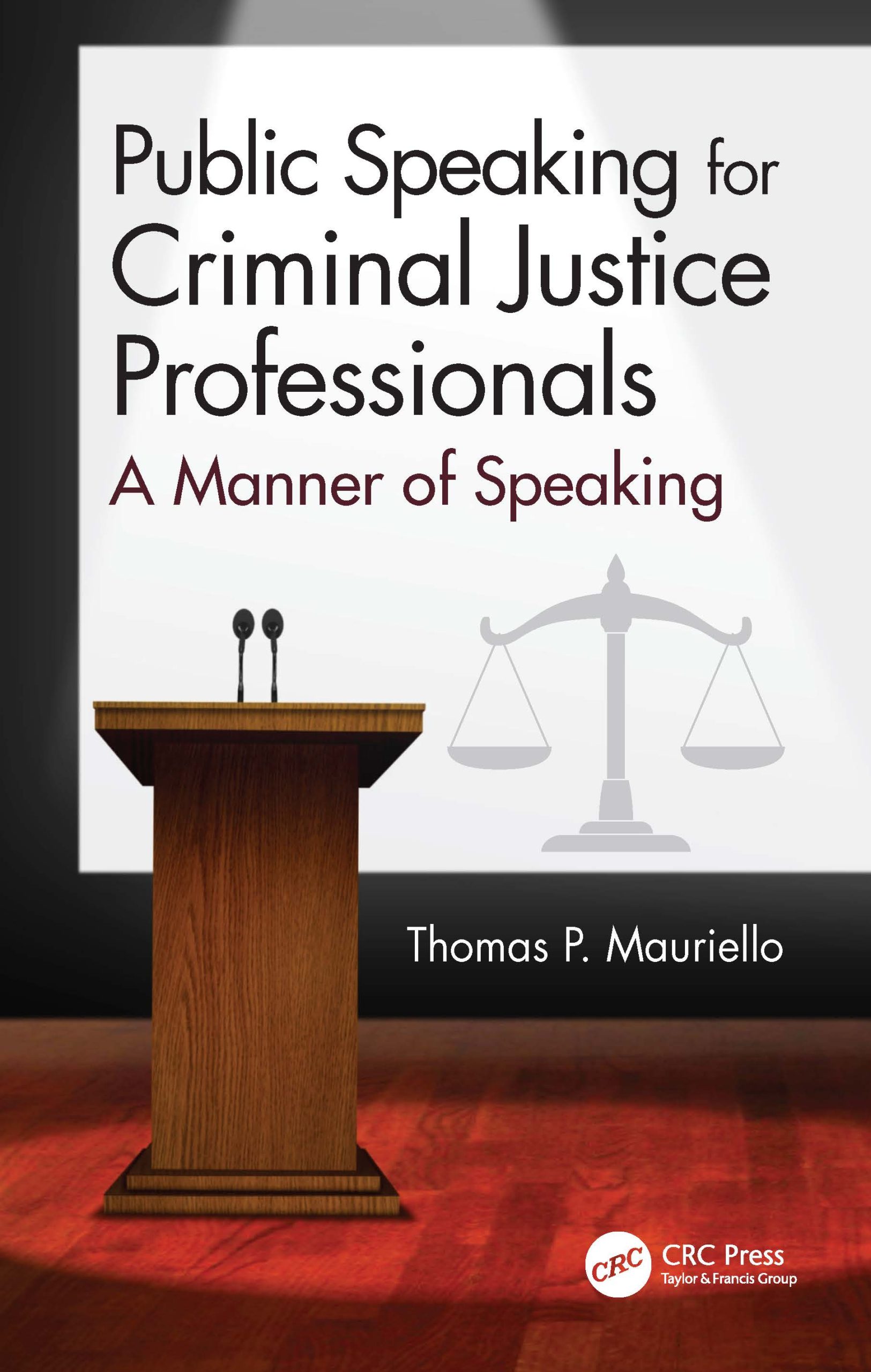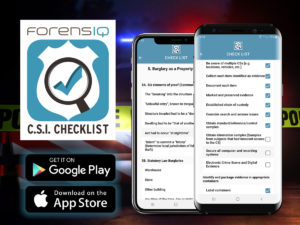First-ever Application of Rapid DNA Technology
The Palm Bay Police Department in Florida was the first to use Rapid DNA technology in a criminal investigation. The DNA profiles were obtained from California based IntegenX’s RapidHIT 200. It is one of two stand-alone devices available in the world that can produce DNA profiles in less than 90-minutes. In January 2014, the Criminal Investigations Division (CID) began processing samples from active criminal cases. The results from the RapidHIT 200 were compared to those from a lab and more than 100 samples matched. The Palm Bay PD is now using the RapidHIT 200 weekly. Chief Doug Muldoon of the Palm Bay PD is very satisfied with the technology saying “The ability to solve selected crimes in less than a day is essential to protecting the public.”
Click here for full article
Source: Space Coast Daily
[Abstract written by Alicia Terrell, ForensIQ Intern, 022714]
The ForensicWeek.com Show airing Episode 52 – Exposing Junk Science in the Courtroom
| ForensicWeek.com is airing Episode 52 this Thursday, February 27, 2014 at 7:00 PM (EST). The topic for discussion is “Exposing Junk Science in the Courtroom.” Their special guest is, Dorothy Clay Sims, attorney and author of the book, “Exposing Deceptive Defense Doctors,” who has spent over a decade teaching lawyers tips on exposing bad experts. Ms. Sims is also retained in criminal cases to assist the defense attorney in cross-examining the state’s forensic expert, as she did most recently in the Casey Anthony case. So join host, Tom Mauriello, LIVE or view the recorded show archived on www.ForensicWeek.com . Thank you for watching!
|
New Handheld Drug-Testing Device
Intelligent Fingerprinting’s innovative device is offering a revolutionary approach to drug screening. The handheld portable drug-testing device analyzes the sweat from a single fingerprint sample for drug metabolites, which if present, indicate drug use. The device provides results in less than 10 minutes and screens for multiple drugs including Amphetamines, Benzodiazepines, Cannabis, Cocaine and Opiates. This product will launch 2015 so mark your calendars!
For more information about this fingerprinting drug-testing device click here!
Source: Intelligent Fingerprinting
[Abstract written by Noel Andres, ForensIQ Intern 2/19/14]
Criminal Justice Related Internships Available at Illinois Central College
Illinois Central College is offering internship opportunities for students and graduates of their Criminal Justice, Law Enforcement and Paralegal Programs. The Criminal Justice Internship (Criminal Justice, Law Enforcement, and 9-1-1 Dispatch) is being offered for the Summer of 2014 and has been rated by students as their most rewarding and favorite elective course. Guidelines for how to apply, deadlines for required meetings, course requirements, and people to contact for more information about the program are listed on their website. If you are a student or graduate of ICC’s Criminal Justice, Law Enforcement and Paralegal Programs, do not miss this opportunity to gain experience in the criminal justice field.
Click here to visit the website.
[Abstract written by Walter Tates, Forensiq Inc. Intern. 021914]
Free Forensic Science and Investigation Training Courses Provided by NIJ & Associates
The National Institute of Justice (NIJ), together with RTI International, The National Forensic Science Technology Center, The National Academy of Medical Examiners, and West Virginia University, offer a variety of free courses and training which can be beneficial to both criminal justice professionals and the general public. A comprehensive list can be obtained at the NIJ main website and although many courses are in the areas of corrections, law enforcement, and courts and courtrooms, a vast majority is in the field of forensics.
Forensic course topics include but are not limited to: Bloodborne Pathogen Training, Bloodstain Pattern Analysis, Crime Scene and DNA Basics, Crime Scene Investigation, DNA Extraction and Quantitation, Firearms and Toolmarks Identification, Firearms Examiner Training, Fingerprint Identification, Forensic Anthropology, Ethics of Forensic Science, Integrated Ballistic Identification System (IBIS), Shooting Reconstruction, Toxicology, and Questioned Document Identification.
The process of registering for these courses is simple and easy. Each course requires the user to have a separate Login and ID. Once this information is obtained the user must navigate, conveniently at his or her own pace, through the entire online self-paced module or recorded session in order to obtain a Certificate of Completion or other accreditation.
Take advantage of this opportunity and register for any and all the courses that interest you! Remember that both these courses and trainings are not only free to public safety employees but many are also free for the general public. Navigate through each module or recorded session and expand your knowledge in the fields of corrections, forensics, law enforcement, and courts and courtrooms!
Click here for the NIJ main website and a list of all the courses!
[Abstract written by Noel Andres, ForensIQ Intern, 0206114]
The Big Picture of Forensic Photography
From Evidence Technology Magazine, author Sanford Weiss speaks about how hard it is to get a job as a forensic photographer. The “CSI Effect,” which is the idea that everything seen on the CSI TV shows can be done in the real world, is a major topic in the article. “Whenever contemporary programs capture the imaginations of the public, they invariably create a thirst for further information, resulting in an upsurge in interest and sales of associated products and technologies.” Weiss goes through advice that might be pertinent to a possible future forensic photographer. Weiss talks about personal experiences, which helped get a head in the practice. Weiss also explains how there are jobs outside of the field of law enforcement that use forensic photographers.
For the full article, click here!
Citation
Weiss, S. (n.d.). Getting a job in forensic photography. Retrieved from Evidence Technology Magazine website http://www.evidencemagazine.com/index.php?option=com_content&task=view&id=256
[Abstract written by Karl “Kip” Zenowich, ForensIQ Intern]
Sirchie Training Calendar, 2014
In an article from Sirchie on forensicmag.com, Sirchie has released its 2014 training catalog. While this was back on November 4th, the classes are still available to register for, and they include many topics, for example, Forensic Photography. Check out the link below to the article on forensicmag.com that you may request information from or you can go straight to the brochure with one of the links below! The full calendar is available on their website as well as possible scholarship opportunities.
For the full article, click here!
For the brochure from Sirchie, click here!
Citation
Sirchie hands-on forensic training. (2013, November 4). Retrieved from Forensic Magazine website: http://www.forensicmag.com/products/sirchie/sirchie-hands-forensic-training#.Uqk9L_RDu8A
[Abstract written by Karl “Kip” Zenowich, ForensIQ Intern]
Be Careful Around The Holidays!
While trying to be a part of the holiday spirit, or at least the “great shopping time” spirit, a word of advice is that one needs to be careful when shopping online around the holidays. Why? Because hackers have the ability to steal your information off of your banking websites. In an article from ABC News, Ira Victor, Director of Digital Forensics Practice at Data Clone Labs says “the cyber criminals can essentially drain your savings account without you even knowing it, or alerting the bank.” But what can we do? Isn’t cyber Monday one of the busiest shopping days online of the year? Ira’s solution is to do all your banking over the phone, or even in person if it is possible to avoid cybercrime and hacking.
For the full article, click here!
Citation
Boatman, S. (2013, December 2). Hackers targeting online banking on cyber monday. Retrieved from News4.com website: http://www.mynews4.com/news/local/story/Hackers-Targeting-Online-Banking-On-Cyber-Monday/gTBXsLq4VESmHgx3GfI- Eg.cspx
[Abstract written by Karl “Kip” Zenowich, ForensIQ Intern]
The ForensicWeek.com Anniversity Show – Episode 42 – Fraud Examination and Investigation
The ForensicWeek.com Show is celebrating its first year anniversary by broadcasting Episode 42, Thursday, December 5, 2013, 7 PM to 8 PM (EST). The topic this week is Fraud Examination and Investigation. “OH What a Tangled Web We Weave When First We Practice to Deceive?” – Sir Walter Scott. The crime of fraud is a misrepresentation with an intent to deceive. Professors Tom Coogan and Colin May from Stevenson University’s Forensic Studies Program, are experts and scholars in the fields of fraud investigation and white collar crime. Want to learn more about the topic and the career field? Then join host Tom Mauriello, his student interns and his special guests at www.ForensicWeek.com . As always – Thanks for watching.
The Death Scene Checklist
When investigating a death scene, there are many things to do and many goals to achieve. Having no structure to your investigation is not a successful way of going through the process of checking a scene out. As author Dick Warrington states in his article on forensicmag.com, an investigator must have a checklist. “Good investigators can keep lots of details in their heads. Great investigators document the details.” Another statement in the article, most cases go to a jury trial. In order to do a good job, and specifically, to remember what happened in the case, a checklist goes a long way. Warrington goes through why a checklist may help whether it is in a complex crime scene or just a simple one where a jury trial will make all the difference. An interesting read for someone who is interested in learning more about the correct way to do investigating. Along with the information provided above, there are links that lead to webinars from Warrington on how to use death scene checklists.
For the full article, click here!
Warrington, D. (2013, October 22). Crime scene documentation: The death scene checklist. Forensic Magazine.
[Abstract written by Karl “Kip” Zenowich, ForensIQ Intern]
A New Cybercrime Lab
In an article from the Canberra Times out of Australia, the Australian Federal Police are receiving a new cyber forensics building that will be used to fight cybercrime. After an attack on the Police’s website, construction began on a $106 million dollar crime lab. The lab is being built with the specific purpose of detecting and fighting back against cybercrime. The lab will also hold facilities for “crime scene analysis, as well as firearms, fingerprints, criminalistics and identification sciences.” With a strong fight on cybercrime, this lab will be the beginning of a new age in cyber-forensics.
For the full article, click here!
Anderson, S. (2013, November 22). New forensics lab will help police take the fight to cyber
criminals. The Canberra Times.
[Abstract written by Karl “Kip” Zenowich, ForensIQ Intern]
Using their Brains – or not: Neuroscience in the Courtroom
When does science infringe on a court’s ability to appropriately decide a case? Neuroscience, the study of the brain, has challenged previous notions regarding juvenile delinquency and the accountability of juveniles for their crimes. Lawyers have increasingly brought brain scans to trial in order to contest the competency of their defendants at the time of police interrogations, guilty pleas, or the crime. Neuroscientists in this article have mixed feelings about certain studies used in courts. Some believe that brain scans are used too often, and some also feel that these scans could have negative consequences. As of now, it is left to the judge’s discretion on whether such studies should be admitted into evidence.
To read the full article, click here!
Citation: Hamilton, J. (November 12, 2013) NPR. The Case Against Brain Scans as Evidence in Court. Retrieved November 12, 2013 from http://www.npr.org/blogs/health/2013/11/12/244566090/brain-scans-shouldnt-get-their-day-in-court-scientists-say.
[Abstract written by Emily McGowan, ForensIQ Intern]
The Omnivore Field Kit
It’s hard to get video evidence in today’s world. Only a few years ago, videotape evidence was used in many cases throughout the world. Now we have moved into the age of the Digital Video Recorder (DVR). In an article from policeone.com, an article from police and security news’ website goes through a few disadvantages to having the new DVR system as a system that gathers video recordings and then provides a solution. An example of a shortcoming is that some media storage devices’ connection ports that are being used to collect video evidence might be incompatible with other devices. The article states that sometimes these connection ports are broken or just the wrong type altogether. A solution from Ocean Systems is the Omnivore Field Kit. The kit is capable of connecting to any type of video device and capable of storing many uncompressed files of video evidence. In a very slim and portable case, the Omnivore Field Kit is available to make investigations with video evidence progress much smoother.
Read the full article here!
Ocean systems releases video acquisition field kit. (2013, October 2). Retrieved from Policeone.com website: http://www.policeone.com/police-products/investigation/computer-forensics/articles/6491797-Ocean-Systems-releases-video-acquisition-field-kit/
[Abstract written by Karl “Kip” Zenowich, ForensIQ Intern]
Digital Evidence Warrants
When executing a warrant for digital evidence, author John J. Barbara states in his article from forensicmag.com, one must execute the warrant within 10 days. However, he states, most investigators “have interpreted this to also mean that the forensic analysis of the digital devices must be completed within ten days after they are seized.” Barbara goes further to explain that there is no guideline that states one must do so. Barbara then talks about how many warrants are actually needed to go through computer evidence. This article is an interesting read for anyone learning about the legal side of obtaining search warrants and executing them.
For the full article, click here!
Citation
Barbara, J. J. (2013, October 29). Executing a warrant for digital evidence. Retrieved from Forensic Magazine website: http://www.forensicmag.com/articles/2013/10/executing-warrant-digital-evidence#.UoTcYBpJOAg
[Abstract written by Karl “Kip” Zenowich, ForensIQ Intern]
Undetectable Guns
In light of 3D printing, it has become possible for individuals to create working weapons out of plastic, thus posing a new threat in access to weaponry. The current federal law mandates that a gun manufacturer must use a certain amount of metal in the finished product for the gun to be detectable by security scanners. This law on undetectable firearms will expire on December 9, and federal officials now must discern the proper course of action in dealing with plastic guns. Some members of Congress have argued that important components of the gun should be made of metal.
To read the full article, click here!
Citation: Yost, P. (November 14, 2013) Forensic Magazine. Undetectable Guns a Law Enforcement Challenge. Retrieved November 14, 2013 from http://www.forensicmag.com/news/2013/11/undetectable-guns-law-enforcement-challenge#.UoUyMvmsiyY.
[Abstract written by Emily McGowan, ForensIQ Intern]






